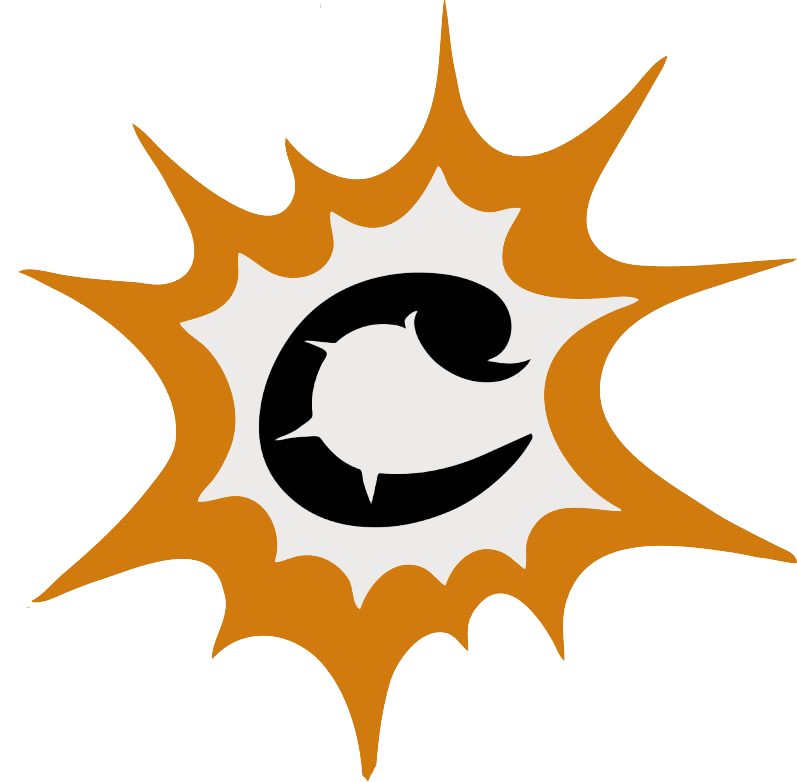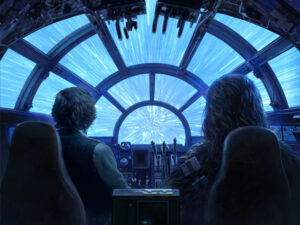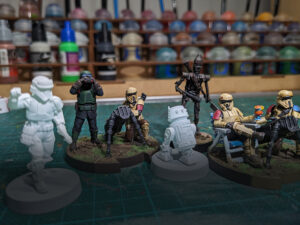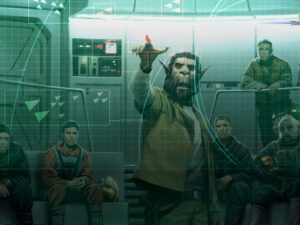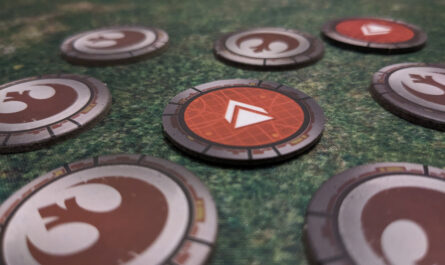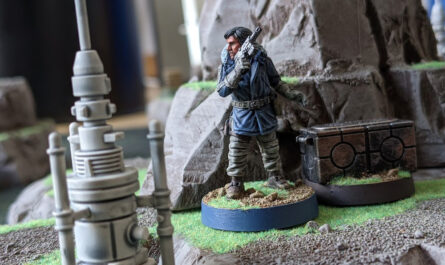Have you chosen your faction and decided that the Empire is the one for you? So, you’re ready to rid the galaxy of the Rebel scum… But where should you start your collection? Which units should you acquire to build a competitive army? In this article, I present a roadmap of a few priority purchases to field an Imperial army in Star Wars: Legion.
Which purchases to start an Empire army the right way?
The Empire Starter
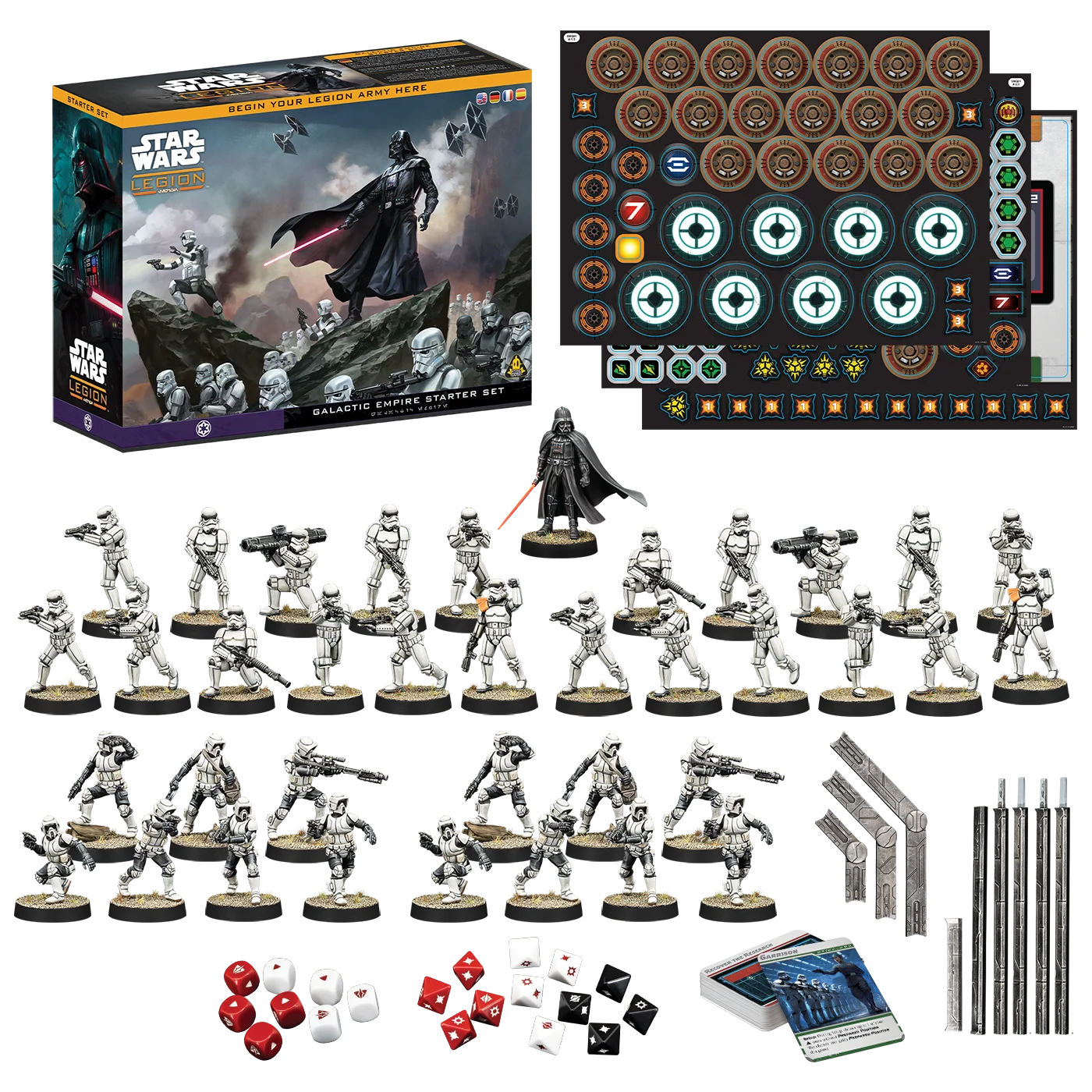
If you’re new to Star Wars: Legion, this Starter is by far the best entry point. It contains all the materials needed to play in the Recon (600-point) format, while laying the foundations for a future Imperial army in the Standard (1000-point) format. In fact, the set contains 37 miniatures that will allow you to easily assemble a 600-point army:
- Darth Vader, Dark Lord of the Sith
- 22 Stormtroopers
- 14 Scout Troopers

Note that the manufacturer, Atomic Mass Games, lists the number of miniatures rather than the number of units. Why? Because it’s your unit configuration choices that will determine how many miniatures are needed to assemble a unit. For example, a unit of Stormtroopers (core unit) is made up of 4 soldiers. But upgrades like the Squad can increase the unit’s core size, adding 5 more soldiers. According to my estimates, the starter will let you build between 6 and 9 units.
Fortunately, the box includes more than just miniatures — you also get the cards needed to make your army work:
- 7 unit cards
- 16 upgrade cards
- 10 command cards
- 24 battle cards
As well as the game materials:
- 20 dice (4 of each type)
- Various tokens
- A set of movement templates (long, medium, and short)
- Range rulers
In short, the starter gives you everything you need to play a game in the Recon format, which requires a 600-point army and is played on an area of about 90 x 90 cm. However, keep in mind that the Standard format is the most popular. It is played on a table of about 90 x 180 cm with 1000-point armies. In other words, if you plan to take part in tournaments, you will need to supplement your Starter Set with unit expansions (I cover these further down in the article).
Extra dice
As you’ve read, the Starter Set includes only 4 dice of each type. To make your games more comfortable, I recommend purchasing extra dice. This will save you from having to jot down results between each re-roll. During a game, it’s common to roll attack or defense pools with ten or more dice.
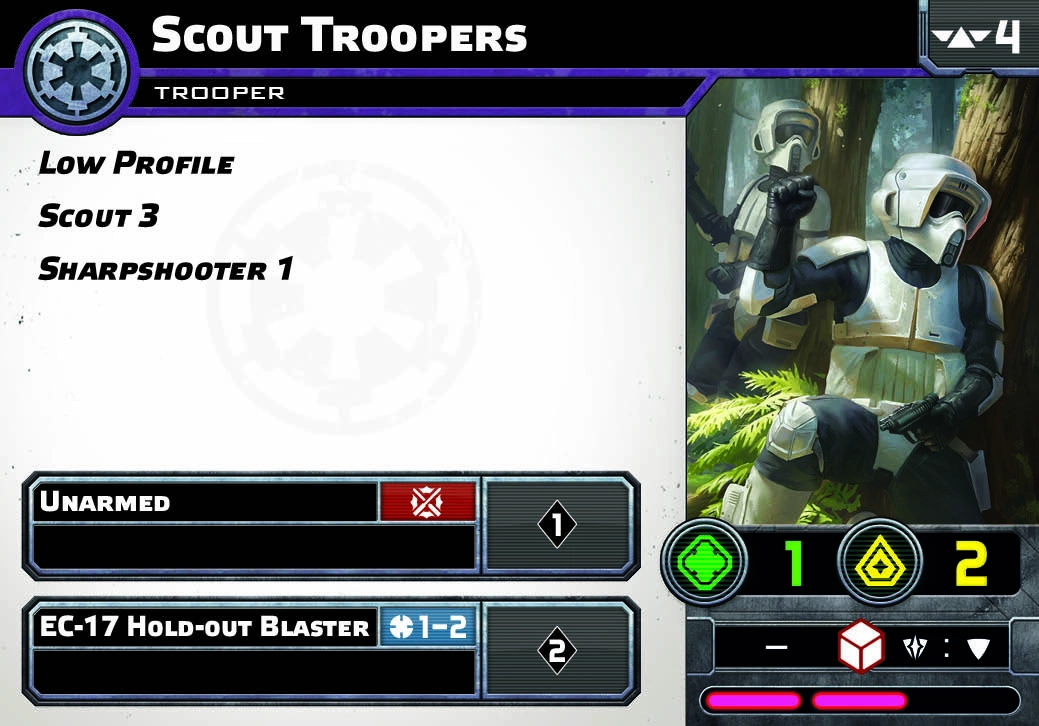
Extra dice can be purchased in dedicated packs. Note that they are split into two different products: an Attack pack and a Defense pack.
Upgrade cards
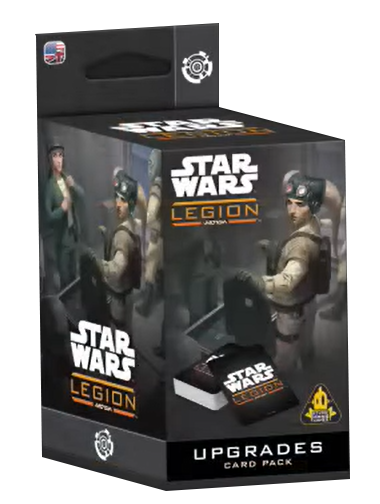
The upgrade card expansion provides numerous improvements for your units. These allow you to boost or specialize them. It’s an essential product, but not a mandatory purchase: you can download these cards for free in their Print & Play version on the publisher’s official website (in English).
Visually, these cards lack charm. Unlike the game’s earlier version, Atomic Mass Games hasn’t taken the time to illustrate each upgrade individually. I think it’s not worth spending your money here — in this case, the print & play version is the clear winner.
.
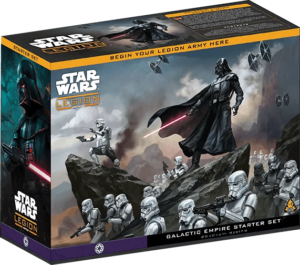
Deploy your first Stormtroopers at an excellent price ✨
Which units to buy after the starter set?
If, after several games in Recon format, you’ve fallen in love with the game, you now have the green light to fully commit yourself to Star Wars: Legion. Congratulations, and welcome to the club! 😉
Anti-heroes
With your starter box, you are sorely lacking in anti-heroes. Sure, Darth Vader wields his lightsaber with skill, but if he falls in battle, he takes all of his command cards with him. Better not put all your eggs in one basket. Fielding several anti-heroes gives you more resilience, greater tactical flexibility, and a more intimidating presence on the battlefield for your opponent…
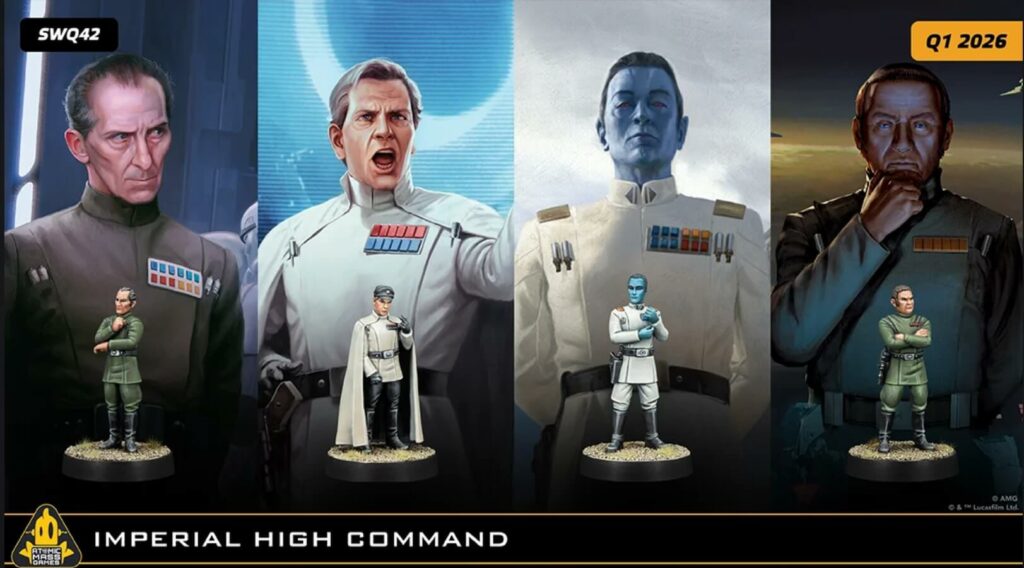
The saga’s anti-heroes are represented either at the Commander rank (e.g. Director Orson Krennic) or the Operative rank (e.g. Kallus). Regardless of their rank, each anti-hero comes with an average of 3 command cards. Since a command hand is limited to 7 cards, you can, in theory, take all the cards from two anti-heroes in your army list.
As for which anti-heroes to choose, it all depends on your personal preferences. Each anti-hero has their own playstyle and stronger synergies with certain units over others, which can help guide you in building the rest of your army. However, the impact of the anti-hero on your overall strategy is minimal in Star Wars: Legion. It’s nothing like the role of a commander in A Song of Ice and Fire, where they define the army’s strategy outright.
Examples
Director Orson Krennic is a troop-support commander. He can distribute Aim tokens, and his Exemplar ability allows nearby friendly units to use his green tokens. For only 75 points, he boosts your army’s offensive dice rolls, particularly by supporting this faction’s devotion to Aim tokens.
By contrast, the bounty hunter Bossk is a self-centered operative. His command cards only target himself. He’s not here to support the rest of the army; instead, he focuses on his own mission: taking down his target (set at the start of the game) and scoring 1 victory point (Bounty keyword). He prefers working on the fly, as shown by his Independent: Surge 2 ability, which grants him 2 surge tokens at the start of his activation if he has not been issued an order that round.
The best Imperial units
Below are the 3 most-played Imperial units at the competitive level right now (2025). Keep in mind that a wargame is a living game, meaning rules evolve and unit stats are regularly rebalanced. What’s strong one year won’t necessarily be strong the next.
Also note that Darth Vader is one of the most powerful units in the Imperial faction, but since you’ll already have him from your Starter, there’s no need to discuss him below. Let’s focus instead on other units you won’t yet have from your starter set:
Dewback Rider
The new version of Star Wars Legion puts more emphasis on close combat, and Dewback Riders are taking advantage of this to make a comeback. Don’t be fooled by their Speed 1: they’re far from slow. Their large base already lets them cover more distance than a small-base unit at the same speed. The Spur keyword lets them reach Speed 2 in exchange for a suppression token, while Unhindered lets them ignore difficult terrain penalties. Thanks to Relentless, they can even attack for free after moving. In short, by the time your opponent finishes reading their profile, these lizards will already be at his soldiers’ throats!
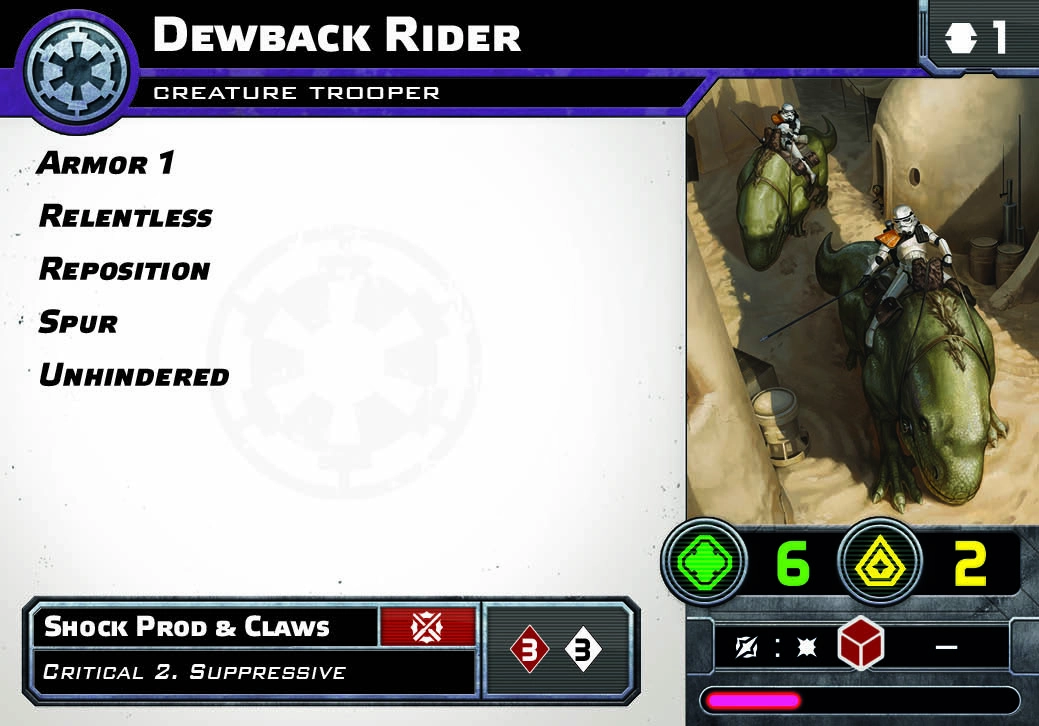
Snowtroopers
Snowtroopers are a core unit with the advantage of generating action advantage thanks to their Steady keyword: they can make a free attack after moving. This means they effectively get 3 actions per turn compared to the usual 2 for “classic” units. Equip them with the Imperial March upgrade (which increases their speed by 1 if they move a second time during the same turn), and you get an aggressive, highly mobile (!) core unit. What more could you ask for?
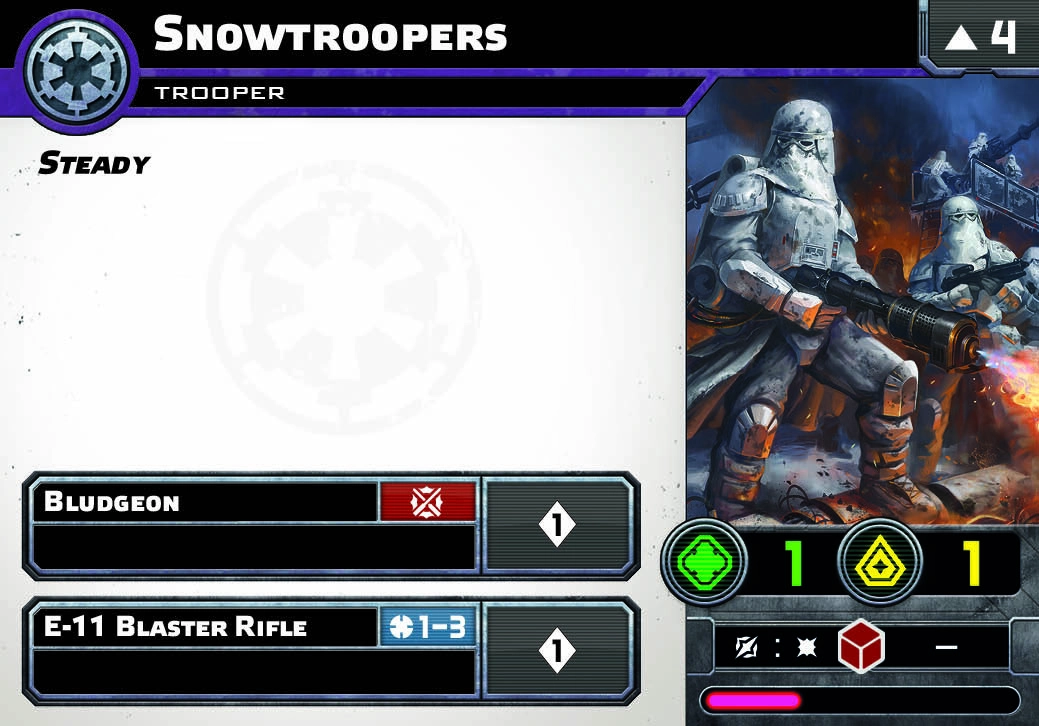
Units from a Battle Force
A Battle Force is an alternative type of army list that comes with specific rules for both list building and gameplay. It represents either a key moment (such as the assault on Hoth) or a major force from the saga (like the Tempest Force). In return, it imposes certain restrictions (such as a limited choice of commanders) but can also provide more flexibility in the structure of your army—for example, by lifting the usual cap on the number of special forces units. In addition, Battle Forces usually include exclusive command cards, which can only be used when playing with the corresponding Battle Force.
Building toward a Battle Force is also a great way to guide your future purchases, since they focus on a limited number of different units. For instance, the Tempest Force is a Battle Force centered around Imperial armor, with a special focus on the AT-ST — those iconic two-legged walkers seen on Endor. That means your shopping list becomes pretty straightforward: All Terrain Scout Transports, again and again!
Not convinced about the power of this kind of list? Think again! Antoine Granet, three-time French Champion of Star Wars: Legion, won the 2025 Île-de-France Open with none other than a Tempest Force. Will you be the one to dethrone him?
Is it worth buying old Star Wars: Legion products?
Star Wars Legion was released in 2018, but it has gone through several changes since then. Originally, the game was published by Fantasy Flight Games, a subsidiary of the Asmodee Group. To better divide its activities, Asmodee decided a few years ago to move the miniatures game to another subsidiary: Atomic Mass Games.
When AMG inherited Star Wars Legion, they decided to reboot it in 2025. If you search the web for Legion products, you may come across older references. Don’t worry: the Imperial miniatures they contain are still valid and can perfectly complement your collection, with the exception of Emperor Palpatine and the Royal Guards — these are no longer playable in the current version of the game. Sniff…
To learn more about these old references, I invite you to read the dedicated article on the subject:
What to do in case of out-of-stock items?
Supply of Star Wars Legion products is neither guaranteed nor consistent. If you encounter out-of-stock issues, you have several options:
- Check e-commerce sites in neighboring countries (Italy, Germany, Netherlands, etc.) in hopes of finding the missing item. Since Legion products are multilingual, there’s no issue buying them abroad.
- Turn to the second-hand market. Vinted has some Star Wars: Legion items. Remember that most older miniatures are still allowed; only their cards are outdated.
- Create proxy miniatures and cards. Many talented sculptors sell their 3D creations on Gumroad, like SkullForge or DarkFire Designs. As for cards, they can be downloaded for free on the publisher’s website.
Some tips to avoid regrettable purchases
Paint and play with your heart
One of the greatest pleasures of wargaming is building your own army, both in unit selection and appearance. Feeling forced to buy miniatures just because they’re strong, when you don’t really like them, is never a good approach. Painting will become a chore, and those units will end up replacing the ones you really care about in your list. The risk? That this hobby, instead of being a source of joy, becomes a burden — even pushing you to give it up.
Try the game first and see how popular it is locally
Getting into a wargame is no small feat. It’s a very time-consuming hobby and can be costly. I therefore advise you not to dive headfirst into Legion, but rather to take the temperature first. Do you really enjoy this game? To be sure, try it first:
- Either through a demo run by a player;
- Or via Tabletop Simulator;
- Or by starting with buying the bare minimum to play (see the first point of this article)
Then, check if there’s an active player community in your area. It would be a shame to invest in many miniatures only to see them gather dust on a shelf.
Buying strong units is good. Understanding why they’re strong is better!
Fielding the best units doesn’t automatically make a good army list. It’s better to understand why a unit is considered strong: understanding its role and how to use it within your army will help you identify which units best complement it. In short, if you understand how to build solid army lists, you can easily spot which units you’re missing. In the article below, I give you 7 tips for building army lists on solid foundations:
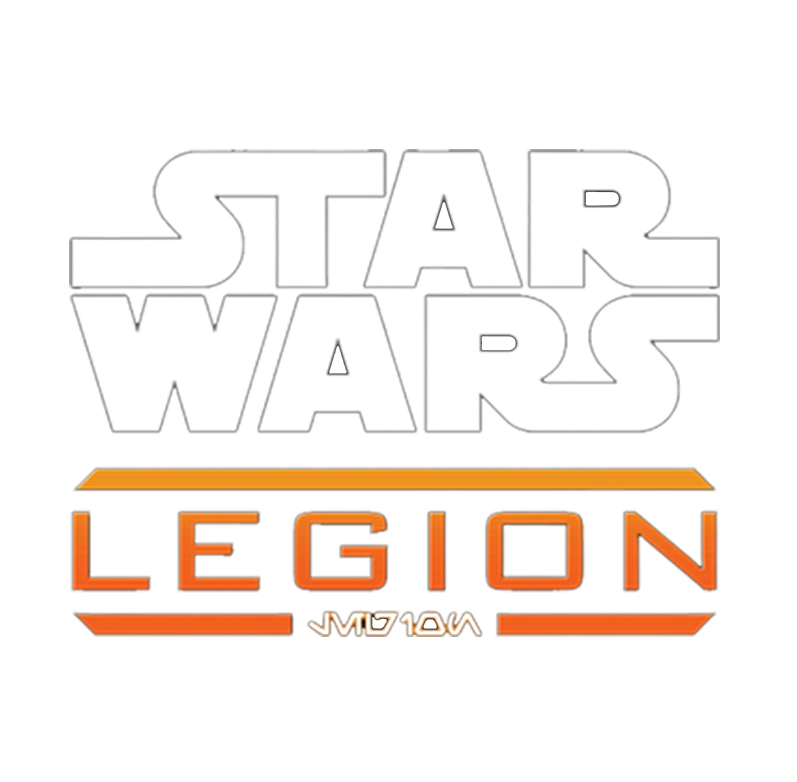
Find Star Wars: Legion players
Join your country’s SWL Discord community and connect with players nearby.
